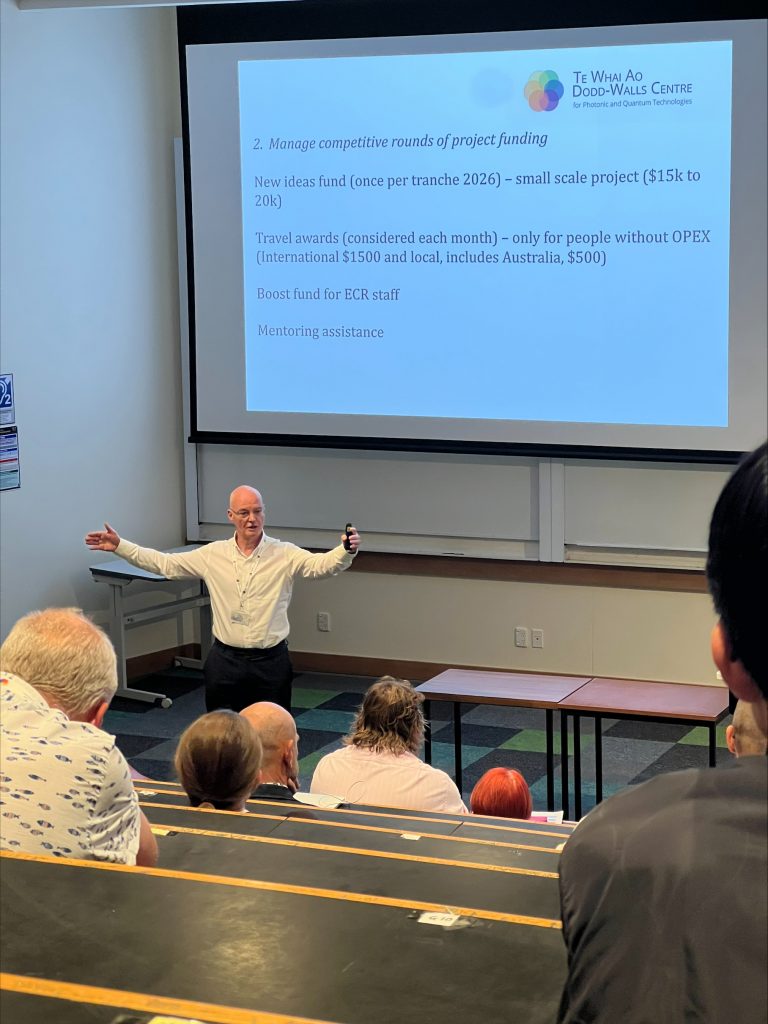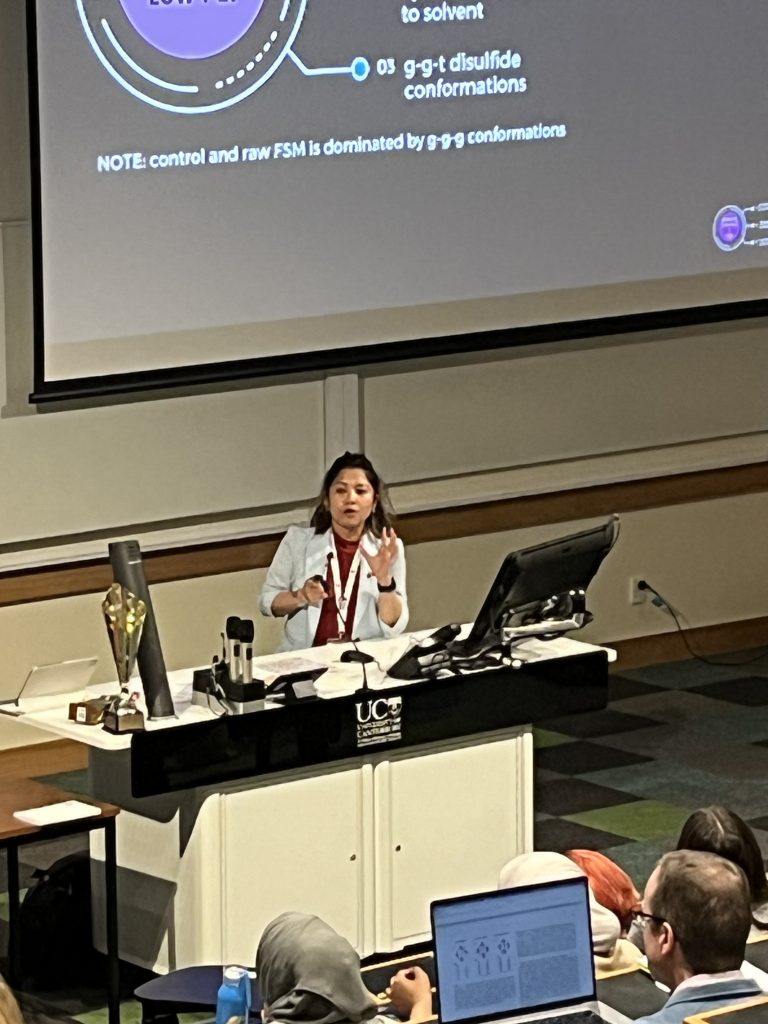NZIC conference
The group attended the NZIC conference in November.
Keith gave talks on low-frequency Raman spectroscopy and excited state systems. MJ and Peter gave posters.
Khansa, MJ and others at the conference dinner
Dodd Walls Symposium
The group attended the Dodd Walls Symposium in November.
Here are some photos
At the poster session: Peter, Anam, Khansa, Yasmin Keith and MJ
At the poster session: MJ, Yasmin, Anam and Sara
MJ and Peter at the Veritide visit on the Friday of the conference
Khansa attends MESA bootcamp
Elkhansa Elbashier attended the MacDiarmid Emerging Scientists Association (MESA) Bootcamp 2024 and had the opportunity to meet with other MESA members from other Universities! 
Congrats to Peter
Peter new paper has recently been published in Pharmaceuticals.
Remoto, P. J. G; Gordon, K. C.; Fraser-Miller S. J. A Quantitative Chemometric Study of Pharmaceutical Tablet Formulations Using Multi-Spectroscopic Fibre Optic Probes. Pharmaceuticals 2024, 17, 1659. https://doi.org/10.3390/ph17121659
The work describes how spatially offset Raman may be used with firbe-optic probes to investigate composition of tablet formulations.
Materials
The power of networking
Yasmin, Anam, Khansa, and Peter attended the “The Power of Networking – Let Us Enlighten You” Dodd-Walls Centre event, 24 October, where they happened to bump into Dr. Jonathan Barnsley. Jon is working with the group on a water analysis project which was part of Sam McCullogh’s BSc(Hons) project.
Jervee at the Riddet Institute Student Colloquium
Jervee participated in the Riddet Institute Student Colloquium 2024 held from August 27 to 29 at Massey University. She delivered a concise 3-minute presentation on her research findings. She had the opportunity to meet Dr. Fatema Ahmmed.
Congratulations Mitchell
Congratulations to Mitchell on his first paper. The work details that use of off-set Raman spectroscopy to investigate calcification in a tissue phantom and has implications for non-invasive breast cancer analysis
Chalmers, M. C.; Tomberg, T.; Gordon, K. C.; Fraser-Miller, S. J. Discriminating Model Microcalcifications Immersed and Under Varying Depths of Wax Using Deep Low-Frequency Raman Spectroscopy. Applied Spectroscopy Practica 2024, 2 (4), 1 – 12. https://doi.org/10.1177/27551857241302079 (acccessed 2024/12/15).
Keith talks at Dodd Walls Symposium
Keith talked at the Dodd Walls Symposium, describing the activities of the Science Team (which he heads up as the Deputy Director of Science)
Topics discussed were funding for travel – the output awards for finishing students the development of an Early Career Group and how the Science Team could help them.
Group at Dodd Walls Symposium
A lot of us are at the Dodd Walls Symposium this week. Some interesting talks including those by Peter Remoto, ElKhansa ElBashier and Jervee Punzalan.
Khansa talked about her work on solar cells
Jervee talked about using vibrational spectroscopy and chemometrics for analysis of protein meal from flaxseed.
Both great talks
Peter is on tomorrrow
Keith comments on new Science article about: Why are parrots so colorful? Study points to simple chemical tweak
Keith recently contributed to a discussion about a paper in Science about parrot feather colors. The Gordon group did some work in this area. We used resonance Raman spectroscopy to establish the frequency dispersion of the dyes, called psittacofulvins (R.Soc.Open Sci. 5 (2018) 172010 and Spectrochimica Acta Part A: Molecular and Biomolecular Spectroscopy 262 (2021) 120146) , being able to characterize their electronic structure. The Science paper (Roberto Arbore et al. A molecular mechanism for bright color variation in parrots.Science386,eadp7710(2024).DOI:10.1126/science.adp7710) goes beyond that in mapping out the genetics of the differing species and relating that back to the color. Very simple oxidative mechanisms are used to change pigment color.
Data from R.Soc.Open Sci. 5 (2018) 172010



















